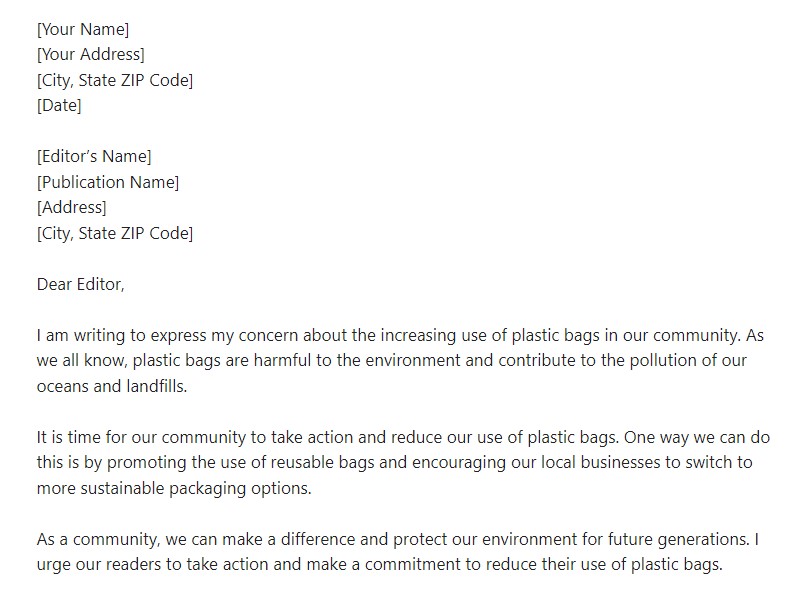An editorial letter is a document that expresses an opinion or point of view on a particular issue or topic. It is often used by editors of newspapers, magazines, or other publications to communicate with their readership.
Here are some frequently asked questions (FAQs) regarding editorial letters:
Q: What is an editorial letter?
A: An editorial letter is a document that expresses an opinion or point of view on a particular issue or topic.
Q: Who can write an editorial letter?
A: Anyone can write an editorial letter, but they are often written by individuals who are experts or have personal experience with the topic they are addressing.
Q: Where are editorial letters published?
A: Editorial letters are usually published in newspapers, magazines, or other publications that have a letters to the editor section or accept editorial submissions.
Q: What should be included in an editorial letter?
A: An editorial letter should include a clear and concise message, evidence or examples to support your argument, and a persuasive and respectful tone.
Q: How long should an editorial letter be?
A: Editorial letters should be kept brief and to the point, usually no more than 250-300 words, as readers are more likely to read and engage with shorter pieces.
Q: Can editorial letters be challenged or debated?
A: Yes, editorial letters can be challenged or debated by readers or other individuals who have different opinions or perspectives on the topic. It is important to maintain a respectful and constructive tone when engaging in these debates.
Here are some tips on how to write an editorial letter:
1. Identify the issue: Begin by identifying the issue or topic that you want to address in your editorial letter.
2. Choose a clear and concise message: Choose a clear and concise message that you want to convey in your editorial letter.
3. Use a persuasive tone: Use a persuasive tone to make your argument and convince your readers of your point of view.
4. Provide evidence or examples: Provide evidence or examples to support your argument and make it more convincing.
5. Use a respectful tone: Use a respectful tone, even when discussing opposing viewpoints, to maintain a professional and constructive tone.
6. Keep it brief: Keep your editorial letter brief and to the point, as readers are more likely to read and engage with shorter pieces.
Here is a sample editorial letter:
[Your Name]
[Your Address]
[City, State ZIP Code]
[Date]
[Editor’s Name]
[Publication Name]
[Address]
[City, State ZIP Code]
Dear Editor,
I am writing to express my concern about the increasing use of plastic bags in our community. As we all know, plastic bags are harmful to the environment and contribute to the pollution of our oceans and landfills.
It is time for our community to take action and reduce our use of plastic bags. One way we can do this is by promoting the use of reusable bags and encouraging our local businesses to switch to more sustainable packaging options.
As a community, we can make a difference and protect our environment for future generations. I urge our readers to take action and make a commitment to reduce their use of plastic bags.
Sincerely,
[Your Name]
